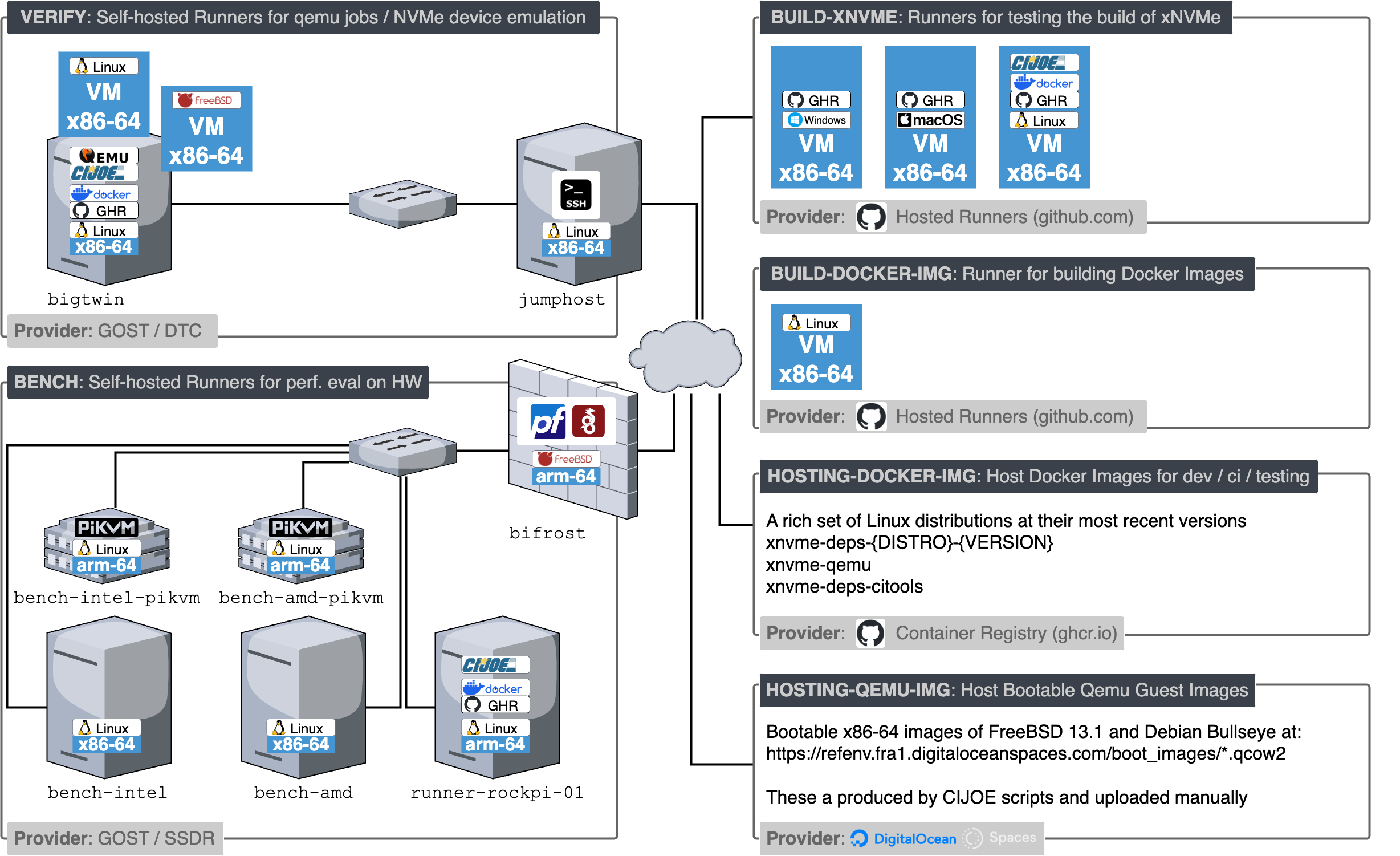Bench#

xNVMe CI environments and resources#
A custom physical setup is utilized to perform benchmarking of xNVMe. This section presents the hardware in the BENCH part of the xNVMe CI environment.
Hardware#
bench-intel#
CPU |
Memory |
Motherboard |
NVMe Devices |
|---|---|---|---|
Intel 12th Gen. Core i5-12600 |
32 GB (2x Kingston 548C38-16) |
MSI Z690-A |
|
bench-intel-pikvm#
This running PiKVM on a Raspberry Pi 4b with the PiKVM V3 HAT, for setup notes see PiKVM V3 HAT Config Notes.
perf-lat-fbsd#
CPU |
Memory |
Motherboard |
NVMe Devices |
|---|---|---|---|
Intel Pentium Silver N6005 @ 2.00GHz |
16GB SODIMM Synchronous 2667 MT/s |
HARDKERNEL ODROID-H3 |
|
perf-lat-linux#
CPU |
Memory |
Motherboard |
NVMe Devices |
|---|---|---|---|
Intel Pentium Silver N6005 @ 2.00GHz |
16GB SODIMM Synchronous 2667 MT/s |
HARDKERNEL ODROID-H3 |
|
perf-lat-win#
CPU |
Memory |
Motherboard |
NVMe Devices |
|---|---|---|---|
Intel Pentium Silver N6005 @ 2.00GHz |
16GB SODIMM Synchronous 2667 MT/s |
HARDKERNEL ODROID-H3 |
|